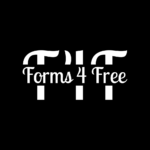Insolvency companies uk refer to companies that are licensed in the UK to oversee formal insolvency procedures. These include liquidations, administrations, company voluntary arrangements (CVAs), administrative receiverships and Individual Voluntary Arrangements, as well as bankruptcy. Insolvency practitioners are the only people allowed to undertake these roles. They are also referred to as liquidators in liquidations, administrators in administrations, supervisors in CVAs and IPAs, and nominees or receivers in administrative receiverships. They may also be referred to as trustees in bankruptcies.
The aim of UK insolvency companies uk law is to help rescue a company, minimise losses and fairly distribute burdens between employees, shareholders, and creditors that result from enterprise failure. While liquidation remains the most common end of an insolvent company, UK law since the Cork Report has aimed to cultivate a “rescue culture” that aims to save companies that could potentially be viable.
If the directors of a company know that they are insolvent, they have a duty to act responsibly and not to continue trading. If they do not, they can be held liable for wrongful trading under section 214 of the Insolvency Act 1986. This makes it a criminal offence to continue trading if a director knew or ought to have known that their company was insolvent. If a company enters insolvency, its assets are sold to repay its creditors according to their priority.
An insolvency practitioner is a person authorised to supervise and carry out insolvency proceedings under the Insolvency Act 1986. They can be appointed to supervise or act as liquidator in a liquidation, administrator in an administration, supervisor in a company voluntary arrangement, or administrator in an individual voluntary agreement, as well as being the trustee of a bankruptcy. They must be a member of one of the Recognised Professional Bodies and their work is monitored by the Insolvency Service and Recognised Professional Body Anti-Money Laundering Supervision to ensure that they comply with the law.
There are 1735 licensed insolvency practitioners in the UK. The ICAEW is one of the Recognised Professional Bodies (RPBs).
A CVA allows a company in financial difficulty to negotiate with its creditors a reduced level of debt repayment. This is in the hope that the company can then restructure its business and emerge from insolvency. A key issue is the calculation of a company’s assets and liabilities, which depends on accountancy practice. However, the law’s general requirement is that accounts should represent a true and fair view of the company’s finances. This will take into account both existing and contingent liabilities, including those that are prospective (e.g., claims for future wages). It will not include a claim for the debt of a secured creditor that has been realised. This is a common claim made by trade creditors when they realise an asset, such as equipment or machinery. It will not, however, include an unrealised claim for a voidable preference payment that has been incurred. A voidable preference is a debt that would not have been incurred had the transaction not been a preferential one.
